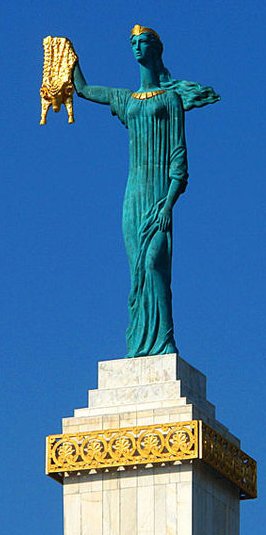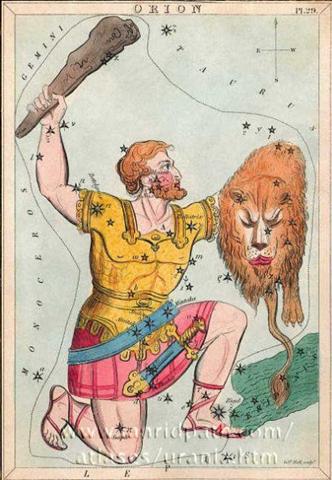4. The location of Colchis in the far east of the known world made it natural to think of it as a land close to where Sun was rising every morning and thus, by inference, also to a land of gold. The spring ('morning') garment of Sun is Mars, alias Ar(i)es, the Ram: "According to the Greek mythology, Colchis was a fabulously wealthy land situated on the mysterious periphery of the heroic world. Here in the sacred grove of the war god Ares, King AeŽtes hung the Golden Fleece until it was seized by Jason and the Argonauts. Colchis was also the land where the mythological Prometheus was punished by being chained to a mountain while an eagle ate at his liver for revealing to humanity the secret of fire." (Wikipedia) To be chained to a mountain (Prometheus) is a parallel to the case of being chained to a rock at the margin of the sea (Andromeda), though a 'world' apart - a mountain (or a pyramid) represents Sky and the rock at the margin of the sea is its opposite, as low as possible without being underground.
Medea with the Golden Fleece held high:
Wikipedia enumerates 18 explanations for the myth of The Golden Fleece, most of which we should pass by in silence. But Robert Graves has evidently said in his book The Golden Fleece / Hercules, My Shipmate, that 'it was a covering for a cult image of Zeus in the form of a ram'. I have not read his book but The Golden Fleece should indeed be regarded as a cover for the sky god (Zeus). Another explanation is also relevant for us: "A more widespread interpretation relates it to a method of washing gold from streams that is well attested (but only from c. 5th century BC) in the region of Georgia to the east of the Black Sea. Sheep fleeces, sometimes stretched over a wood frame, would be submerged in the stream, and gold flecks borne down from upstream placer deposits would collect in them. The fleeces would then be hung in trees to dry before the gold was shaken or combed out ... Judging by the very early gold objects from a range of cultures, washing for gold is a very old human activity. Thus Strabo describes the way in which gold could be washed: It is said that in their country gold is carried down by the mountain torrents, and that the barbarians obtain it by means of perforated troughs and fleecy skins, and that this is the origin of the myth of the golden fleece - unless they call them Iberians, by the same name as the western Iberians, from the gold mines in both countries." I like this explanation because it connects the 'gold' of the 'Lion' with flowing water (as in the River). The tail of the Skin of the Lion is hanging down into Eridanus and the golden dust of his tail will go with the flow and some time later it will be possible to retrieve it.
Eridanus, we can see, is ending at the left foot of Orion, where the gold should be collected. The drawing may have been intended to make us perceive a cycle which then continues up trough his left knee and thigh, across his belt and further up, ultimately leading out again to the hind quarter of the Lion where his tail is. The imagined cycle is like vaha kai with a 'knee' at center left:
This 'knee' has in Ka1-11 probably been raised high because of the straight henua at left:
|



